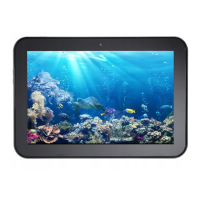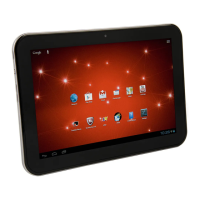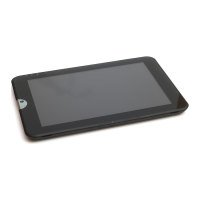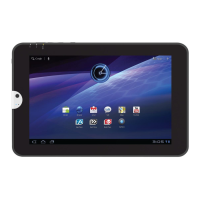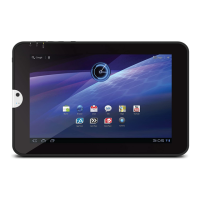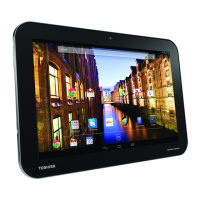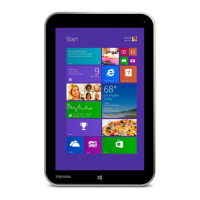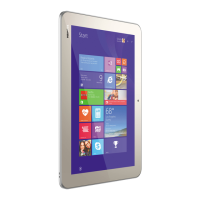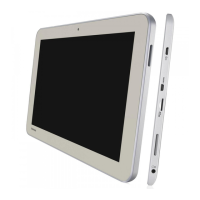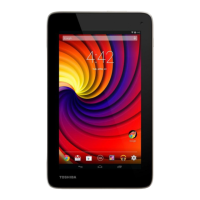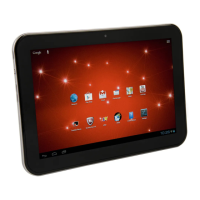
Do you have a question about the Toshiba AT300 and is the answer not in the manual?
| Display Size | 10.1 inches |
|---|---|
| Resolution | 1280 x 800 pixels |
| Processor | NVIDIA Tegra 3 |
| RAM | 1 GB |
| Operating System | Android 4.0 (Ice Cream Sandwich) |
| Rear Camera | 5 MP |
| Front Camera | 2 MP |
| Weight | 590 g |
| Internal Storage | 16 GB |
| Dimensions | 260.6 x 178.9 x 8.95 mm |
Legal notices regarding manual reproduction, liability, and patent information.
Lists registered trademarks and licensing notices for product technologies.
Details compliance with FCC regulations and CE marking requirements.
Information on working environments, EMC, and additional environmental notes.
Disposal guidelines for EU, India, Canada, Turkey, and other regions.
Introduces the Quick Start Guide and the full User's Manual.
Highlights the Safety and Comfort manual and explains safety icons.
Verifies included items and provides a grand tour of the tablet's parts.
Details the tablet's core hardware: Processor, Memory, Display, Multimedia, and Communications.
Guides on connecting power, powering on/off, setup, screen locking, and battery care.
Explains how to charge the battery, charging times, and battery life.
Explains basic touch gestures like tap, press & hold, drag, and pinch.
Describes the Home screen layout, icons, and system bar elements.
Covers opening apps, switching, and managing notifications.
Instructions on locking the screen and taking screenshots.
Guides on adding items, moving, removing, and changing wallpapers.
Explains screen orientation, task management, computer connection, and factory reset.
Using the Analog clock, Browser, Calculator, and Calendar applications.
Taking photos/videos, reviewing media, and playing music.
Managing downloads, emails, and contacts.
Using Service Station, File Manager, and Media Player for updates and organization.
Managing Wi-Fi, Bluetooth, NFC, and mobile networks.
Adjusting sound, display brightness, wallpaper, and video/audio enhancements.
Checking storage, battery usage, managing accounts, and security.
Configuring date/time, accessibility, language, input methods, and backups.
Using memory cards and SIM cards for expanded storage and connectivity.
Connecting USB and HDMI devices for data transfer and display.
Information on available tablet docks for enhanced functionality.
Steps to diagnose and resolve problems effectively.
Basic checks for common issues like power, peripherals, and cables.
Addresses issues with display, memory cards, USB, sound, and monitors.
Solutions for problems with Wireless LAN and Bluetooth device access.
Guidance on investigating issues and contacting Toshiba for assistance.
Provides physical size and operating condition details.
Lists AC adaptor and tablet power specifications.
Compatibility with wireless standards and health/safety considerations.
Compliance and restrictions for radio frequency usage in Europe.
Details FCC, IC, Taiwan, and Japan regulations for wireless devices.

